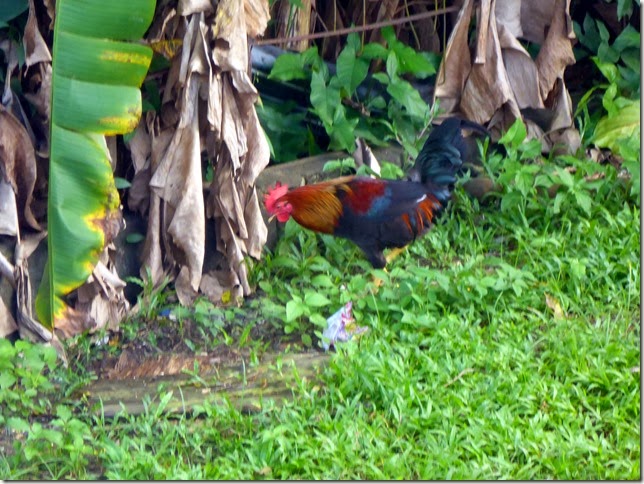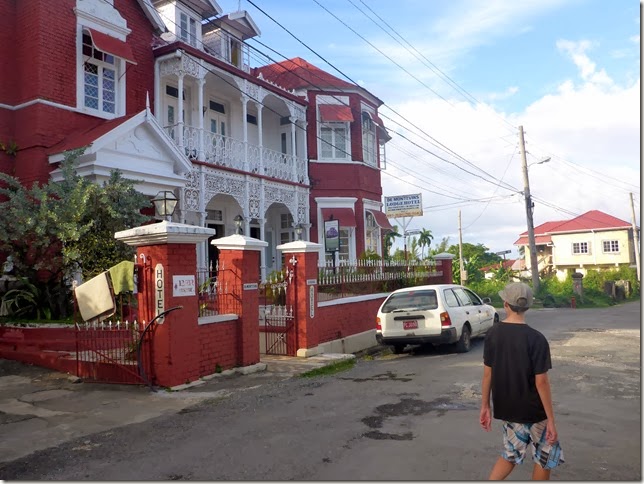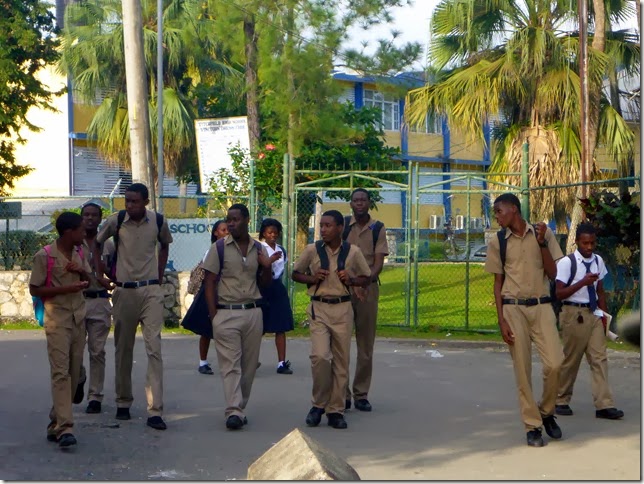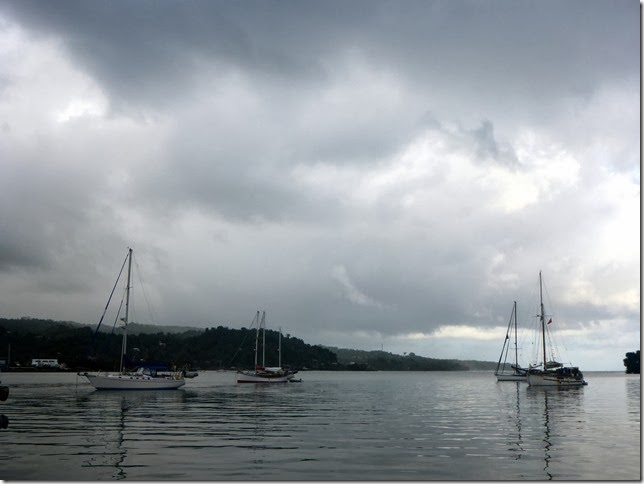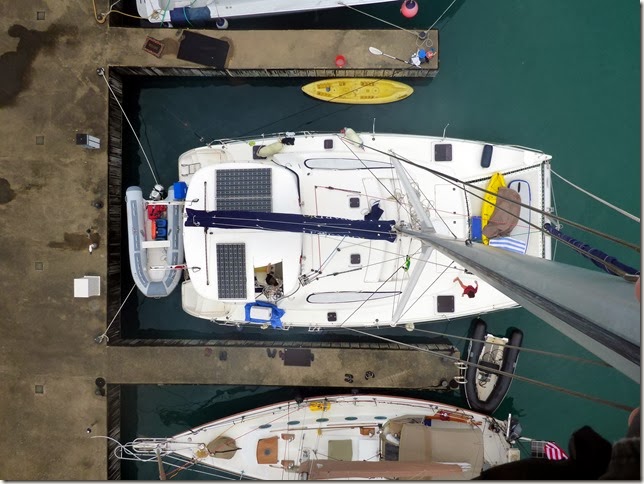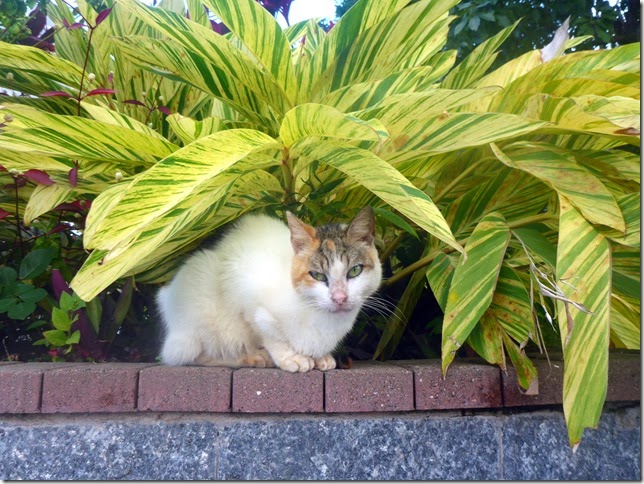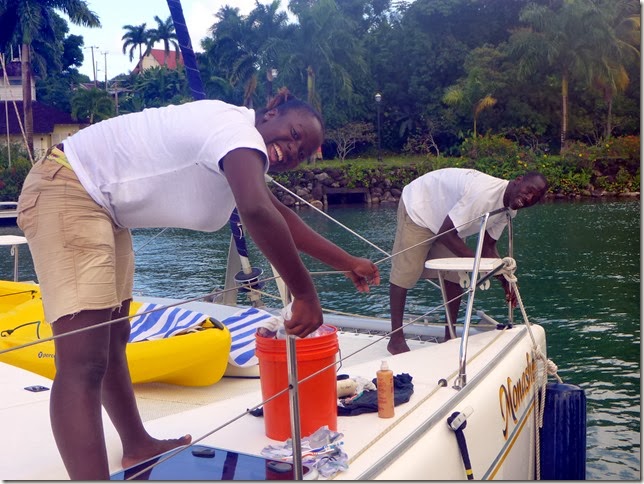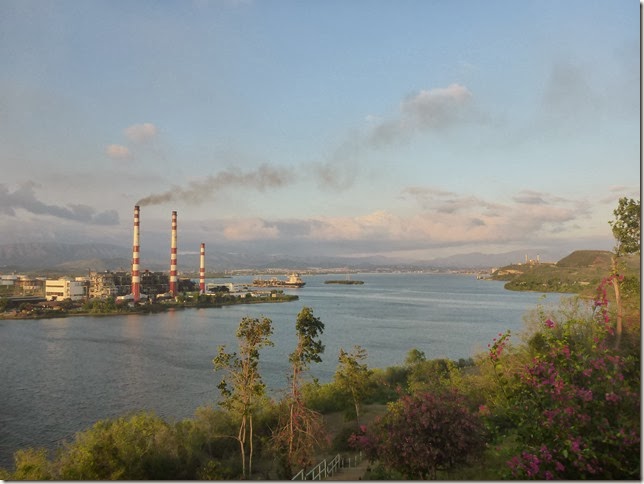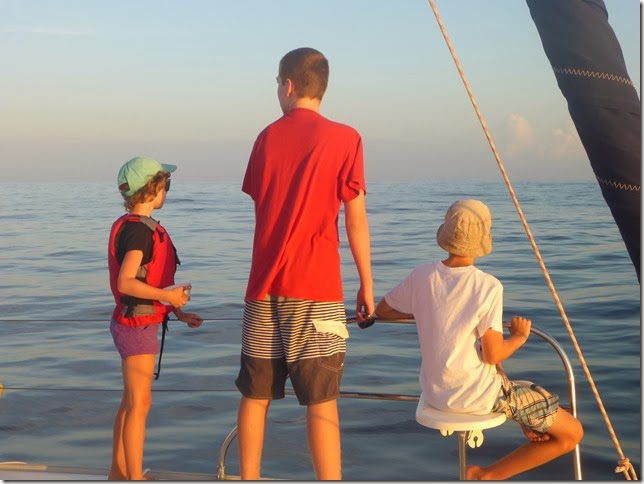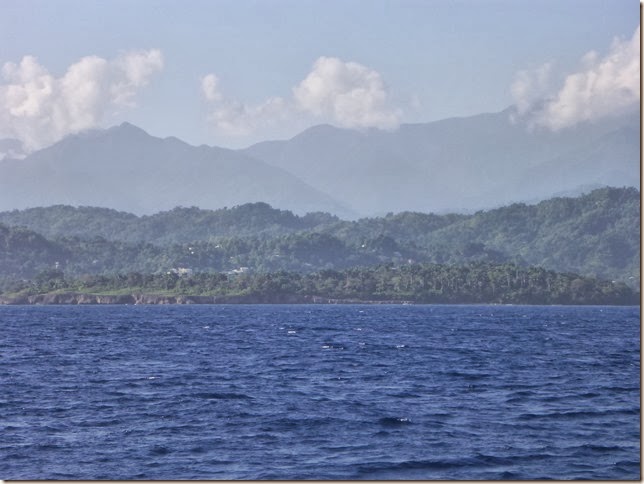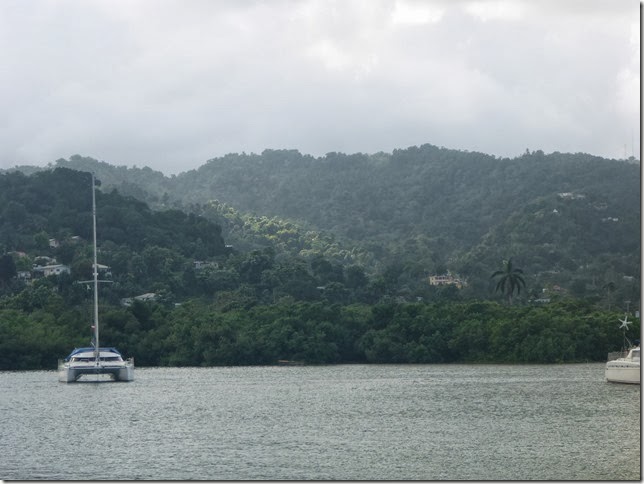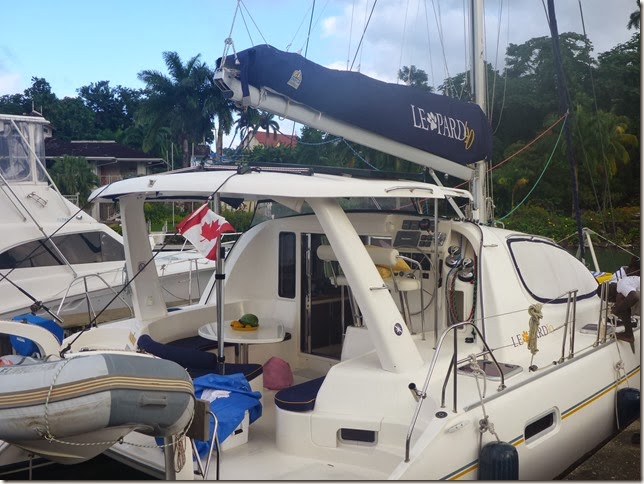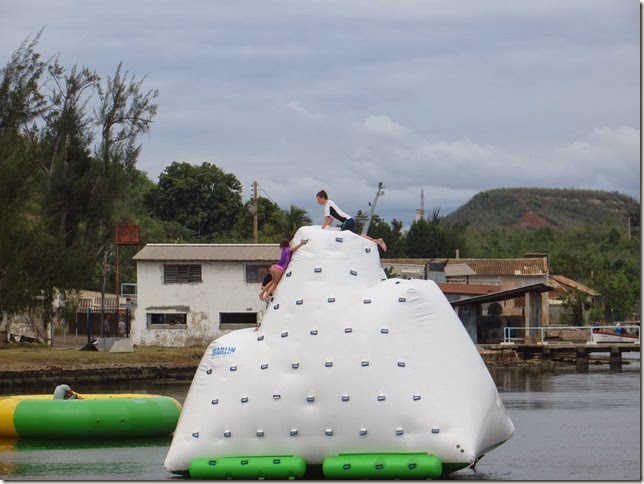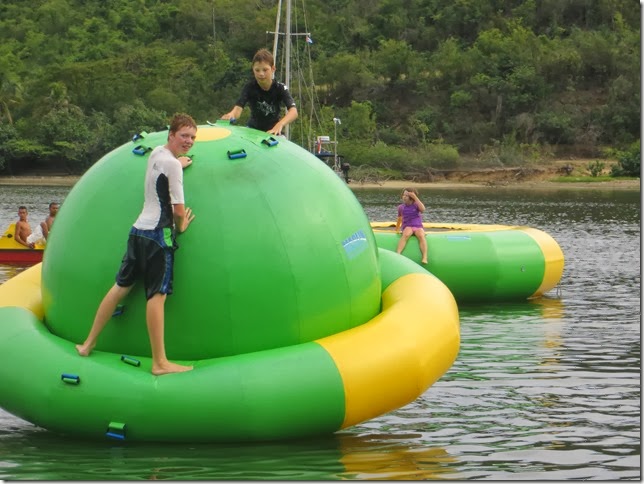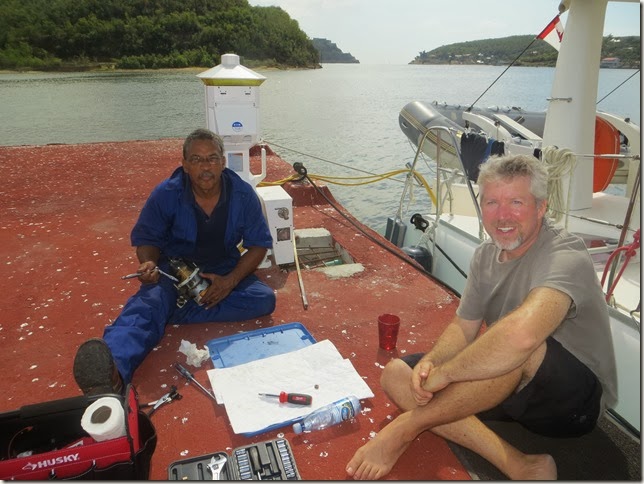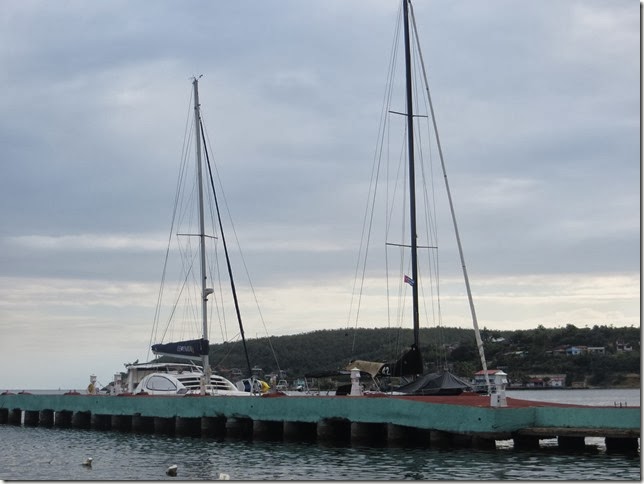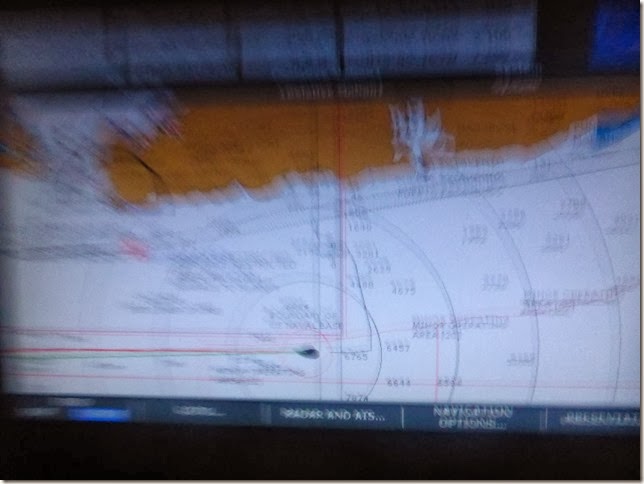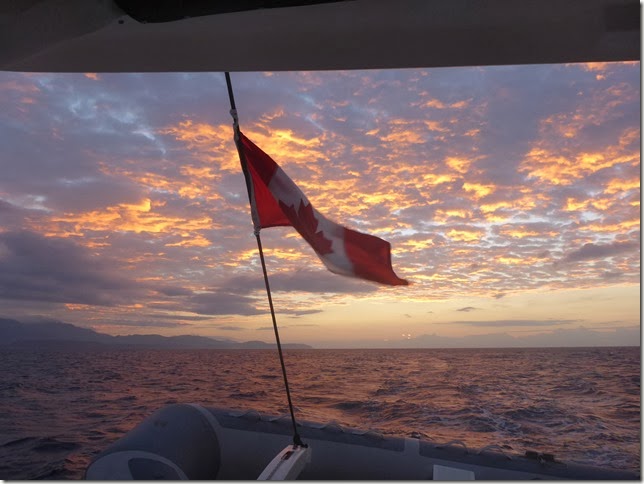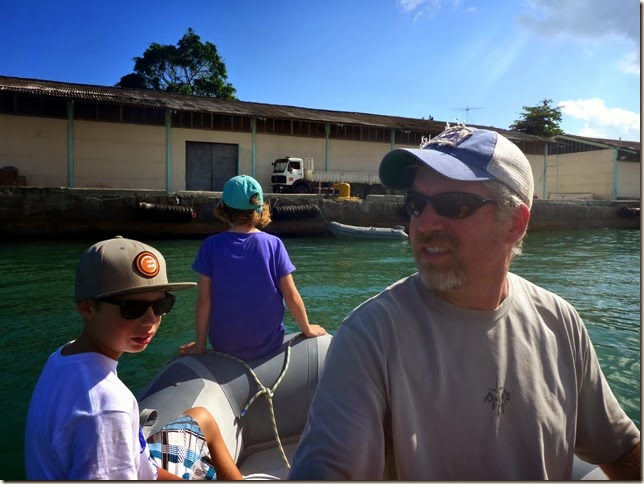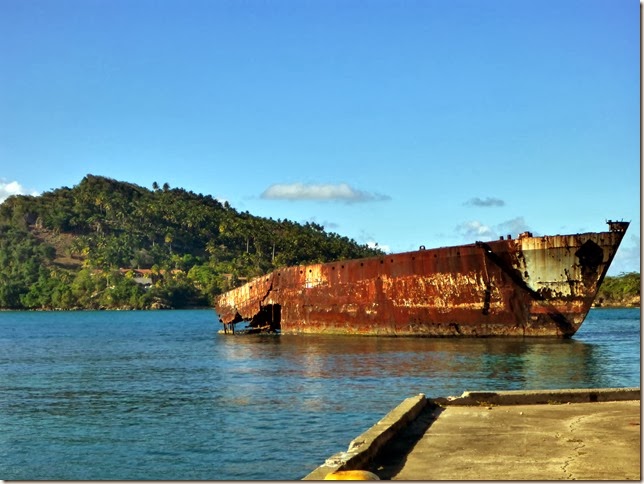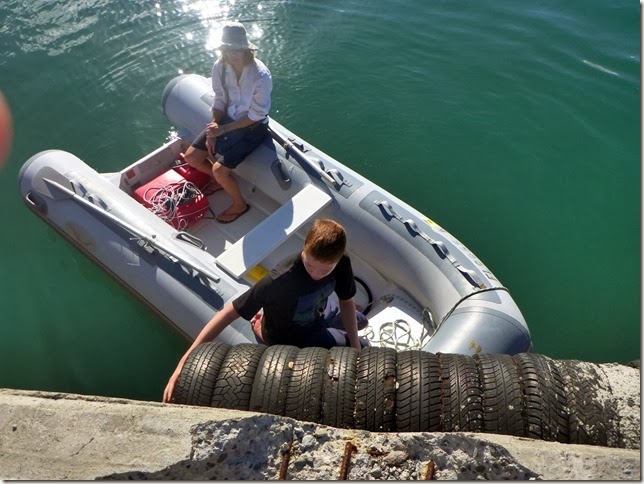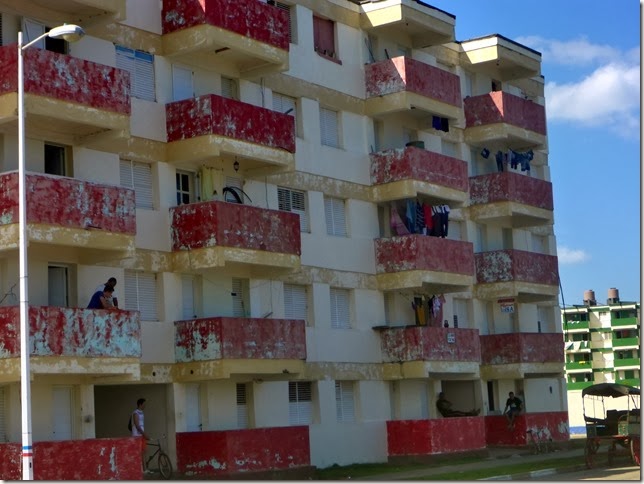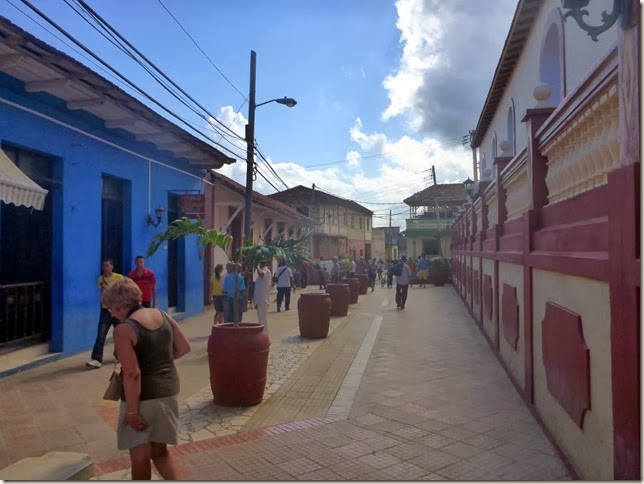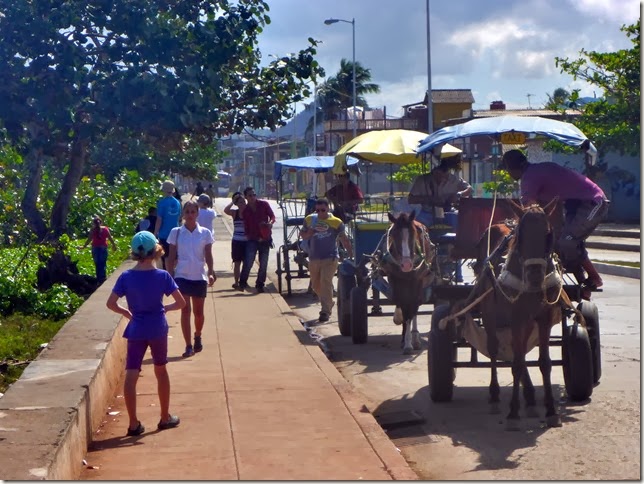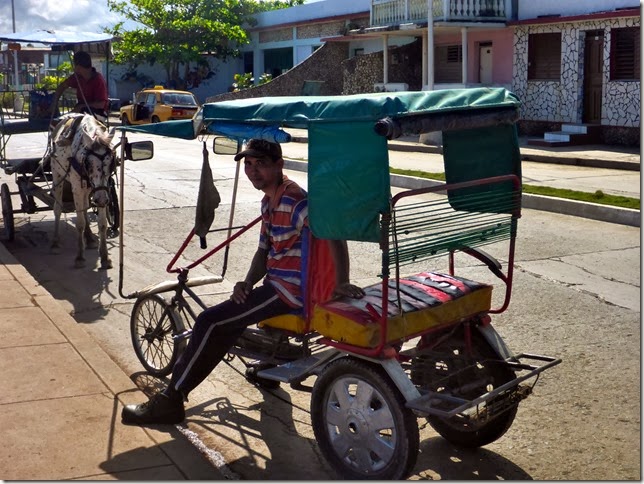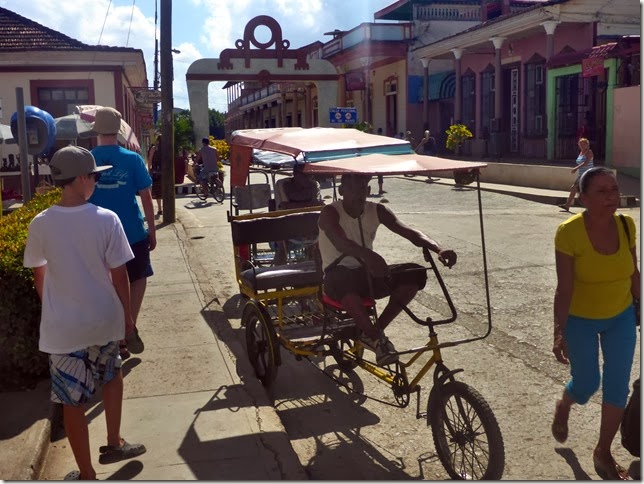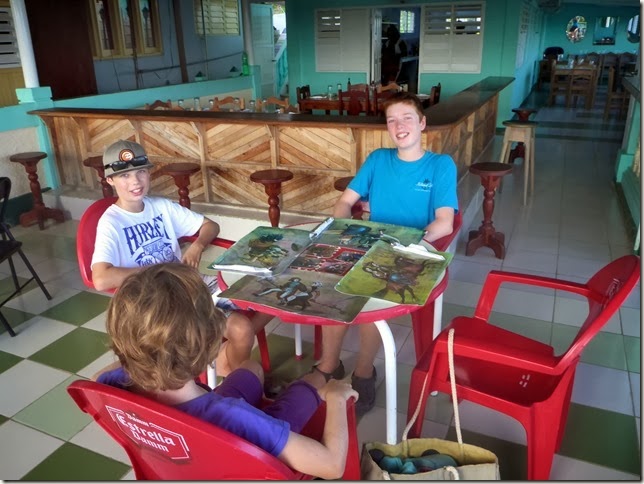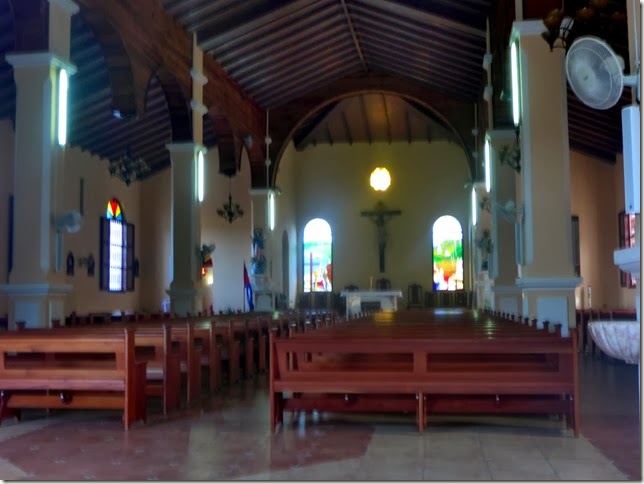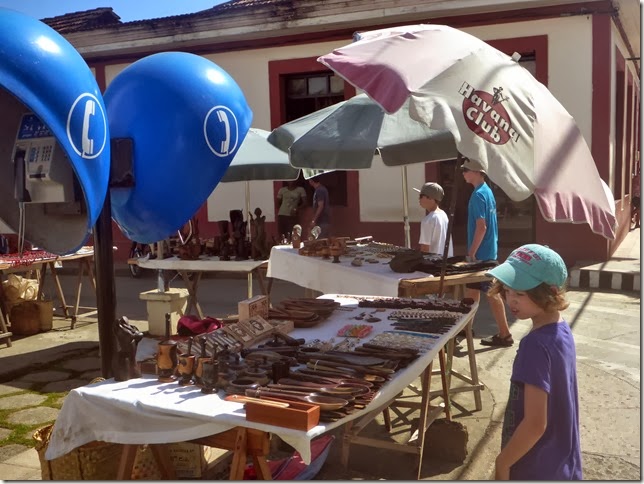Posted by Scot. Written January 16, 2014.
OK, we haven’t had a technical boat post for a while. Mostly travelogue recently. But it is time to get a few issues off my chest.
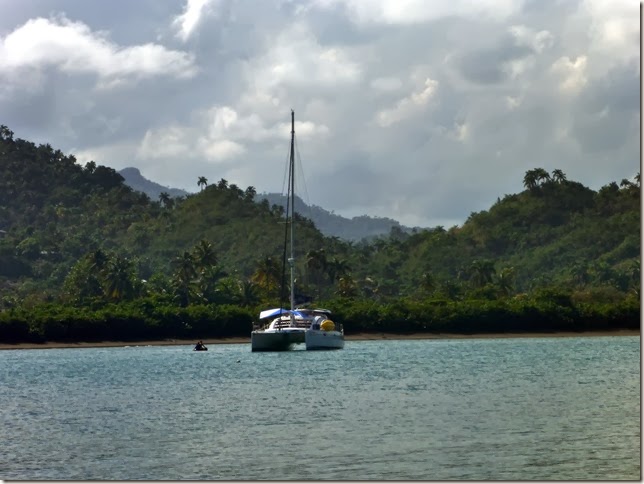 |
| Monashee at anchor in Baracoa, with fishermen setting their net from an inner tube behind. I don't think they really needed to come right behind our boat, but they seemed to want to get a look inside. |
For the most part, we are thrilled with our boat. When we compare it to other boats out there, we realize we lucked out with a remarkable platform that is perfect for the kind of adventure we are on, and fits our family to a “T”. It also highlights the fact that people are willing to come out and sail around the Caribbean on boats that we would never consider. Not that we are snobbish. We are just not as prepared as some people to fix a million issues on an aging vessel, or to take the same risks with things like finicky engines, leaking bilges, or suspect water and power supplies. And by “not prepared” I don’t mean that we aren't willing to fix those things. What I mean is that there is nothing in our backgrounds or education that has really provided us with the necessary knowledge to fix those things. So we would just be making it up as we go along.
Having said all that, though, we have been struggling with a few issues on our boat, which in the grand scheme of things are relatively minor. For sure, if we were still in Florida, they would be really minor. We would probably have them all fixed in a day or two, and they wouldn’t occupy much of our attention. But sitting here, in the isolated bay of Baitiquiri, on the south coast of Cuba, where we are not even allowed to go ashore, minor issues have a way of seeming a lot more significant. Mainly because, without everything working perfectly, the safety margin that we depend on is being chipped away. We are getting close to the point where another minor issue or two could add up to a major issue, and make things more sketchy than we are happy to live with.
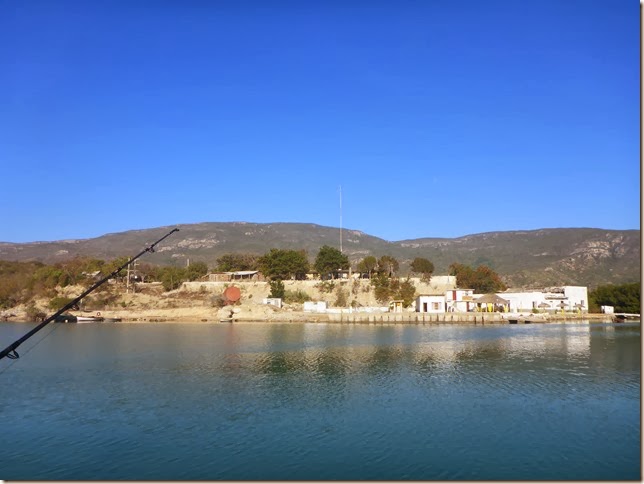 |
| All of Baitiquir that we are allowed to see, since it is forbidden to go ashore. Although I'm not sure there is a lot more to it. |
 |
| The Baitiquiri Guarda Frontera, heading in after they checked out our boat. |
The issues we are currently working through started in Georgetown, shortly after we replaced our Outback Hub. That is the device that links up our electrical system, and gives us a readout regarding our solar input, battery charging, and battery inverter. For some reason, not long after we put the new Hub in, we noticed that we couldn’t run our water maker or our microwave when the generator was charging the batteries. There seems to be a significant power loss somewhere in the system. On our panel, it looks like there is a big voltage drop when we try to run these things, but I am not sure that the analog meter is working right. It doesn't seem to read the same when I check it with a voltmeter.
We seem to be able to work around it by turning off the battery charger, and running those systems independently. But that means we need to run the generator twice as long, and use twice as much diesel if we want to make water. Before we left Georgetown, I contacted Rafael in Fort Lauderdale, and he had some trouble shooting suggestions, but nothing seemed to fix the issue.
I also contacted Outback themselves. They didn’t get back to me for a while, but just before we left the Bahamas for Cuba, they sent me links to a bunch of Youtube videos about the system to “help me understand it.” For all I know, the answer might be in there somewhere. But with next to no internet access in Cuba, that is not the most helpful approach. Fortunately it has not been that big an issue so far, since we spent several days in a marina when we first got here. That allowed us to charge our batteries right up on shore power, and fill our water tanks. That means we have been able to pickle our water maker for now, and just ignore the problem. Still, frustrating. And something we will need to get sorted out eventually.
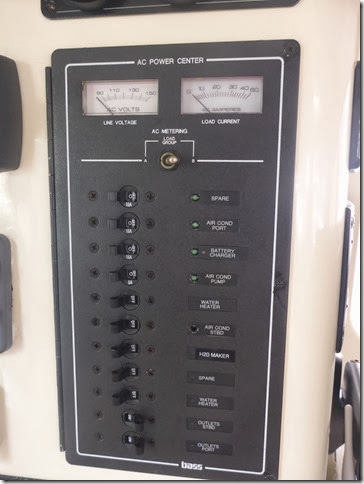 |
| Our AC pwer panel. The analog dial in the upper left may or may not be right in telling us we have a gremlin in our A/C. system. I will need to find a marine electrician somewhere to help me out with this one. |
The next issue that is troubling us has to do with our outboard engine, on our dinghy. Before we left Ft. Lauderdale, we knew it was in need of a 100 hour service. We tried to get this arranged there, and we did go over the engine with Rafael, who didn’t find any problems with it. Strangely, we couldn’t find a place in Ft. Lauderdale that was willing to come and pick up our engine to do the service. And since we had already given up our van, we had no way to get it to them. So, we figured we would get it done in the Bahamas, where we could bring it in by boat.
In Georgetown, there is an outfit called Minn’s Watersports, who agreed to service our engine for us. Which was good, because by that time, we were having problems with it cutting out intermittently. Their diagnosis was water in our fuel, so they cleaned out the fuel system, dumped all our gas, and sold us a new tank full. After doing all that, when we went to pick up the engine, they told us they didn’t have any parts to service it (like no filters, impellers, oil, etc.). That was after keeping it for five days. So the service still never got done. It seemed to run better, though, so we paid them and figured we would service it ourselves when got access to the parts. Again, not going to happen in Cuba.
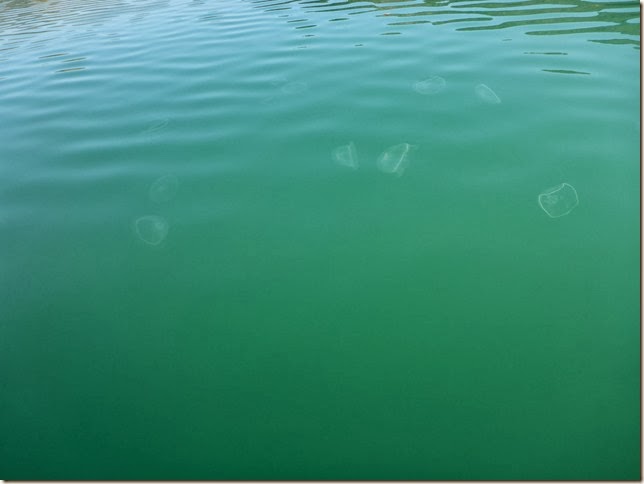 |
| The bay at Baitquiri is full of jelly fish. We were hoping to get under the boat to clean it here, but were not so keen after seeing this. |
Then, the day before we left Georgetown, the engine started to cut out again. We noticed, at that point, that there was very little water coming out of the cooling system (normally, there is a steady stream flowing out of these little cooling ports). I think, now, that that was probably the problem all along, and that the engine is overheating when we run it hard.
When we were in Puerto de Vita, I managed to hook a hose up to the system and tried to back flush it. It seemed to clear a bit, but we haven’t gotten to test it yet, since we are really not allowed to use our dinghy in Cuban bays and anchorages. Again, it is not a huge issue, since we seem to be able to run it a little bit, and it is OK over short distances. But it does erode our safety margin, since the outboard on the dinghy could also be used to tow the big boat in the event of engine failure there.
Which brings me to our third issue. As we were motoring from Puerto de Vita into Baracoa, we noticed the rpms on our starboard engine started to drop periodically, and then pick up spontaneously. This started to happen in the last hour of our 20 hour trip. Previously, it had seemed to be running fine. We didn’t run the engine the entire way, but it ran for a big chunk of that trip.
When we left Baracoa for the overnight trip around Punta Maisi, to Baitiquiri, where we are now sitting, initially, the engine seemed to run fine. Then, again, two hours before we got here, the rpms started to drop. This time, it was further, and more frequently. With our limited knowledge of diesel engines, we have pored over our diesel repair book, and the owner’s manual. It seems the most likely problem is a faulty fuel injector, although air in the fuel lines could also account for the problem. Given that I have no way to repair a fuel injector in our current location, I decided to bleed the fuel system, and hope that might help. I suspect it won’t, though, since you would think if there was air in the fuel system, the problem would have been consistent, instead of getting worse as we ran the engine longer.
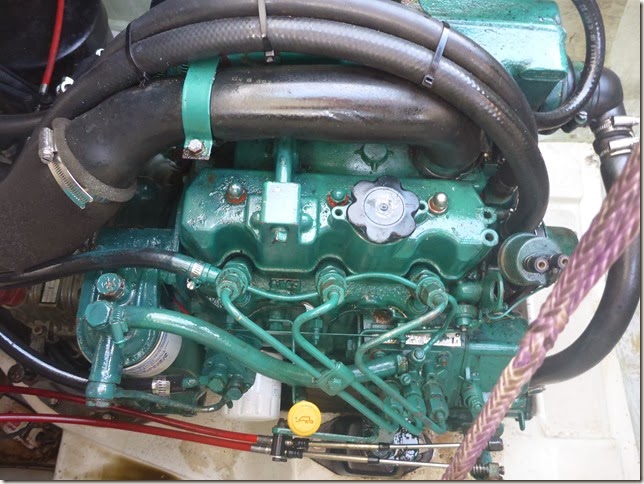 |
| The fuel injectors are those three things in the middle of the picture with the small pipes running to them. |
So now, we are faced with another overnight trip to Santiago de Cuba, this time with one engine that works well, one that may or may not work, and a limited ability to tow the boat, with our outboard only working partly. That means, in the unlikely event that our second engine quits, we will only be able to move the boat under sails alone. Which could be a challenge, since we intentionally timed all these overnight passages to coincide with little to no wind (which reduces the night time seasickness factor on our boat). That is the forecast for the next several days.
And it remains to be seen whether we can get fuel injectors repaired in Santiago de Cuba. Apparently Cuban mechanics are miracle workers with limited resources, so our fingers are crossed. But if we need parts, like a new fuel injector, we are probably screwed. Which leaves us with trying to get the boat somewhere else. Like 115 miles across open water to Jamaica.
Adventure. Not always fun when you are in the middle of it.
